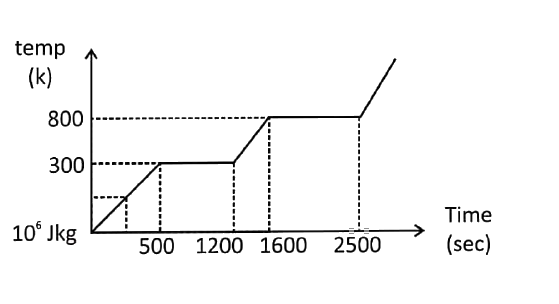Define molar heat of vaporization.
Step-by-Step Text Solution:
1. Definition of Molar Heat of Vaporization:
Molar heat of vaporization is defined as the amount of heat energy required to vaporize one mole of a liquid at its boiling point.
2. Understanding the Concept:
- The term "molar" refers to one mole of a substance, which is approximately 6.022×1023 molecules.
- "Heat of vaporization" indicates the energy needed to change a substance from a liquid to a gas.
3. Conditions for Measurement:
- This measurement is taken at the boiling point of the liquid, which is the temperature at which the vapor pressure of the liquid equals the external pressure surrounding the liquid.
4. Abbreviation:
- Molar heat of vaporization is often abbreviated as ΔHvap or ΔHvaporization.
5. Importance:
- Understanding molar heat of vaporization is crucial in various fields such as chemistry, engineering, and environmental science, as it helps in calculating energy changes during phase transitions.
Molar heat of vaporization is defined as the amount of heat energy required to vaporize one mole of a liquid at its boiling point.
- The term "molar" refers to one mole of a substance, which is approximately 6.022×1023 molecules.
- "Heat of vaporization" indicates the energy needed to change a substance from a liquid to a gas.
- This measurement is taken at the boiling point of the liquid, which is the temperature at which the vapor pressure of the liquid equals the external pressure surrounding the liquid.
- Molar heat of vaporization is often abbreviated as ΔHvap or ΔHvaporization.
- Understanding molar heat of vaporization is crucial in various fields such as chemistry, engineering, and environmental science, as it helps in calculating energy changes during phase transitions.
Similar Questions
Molar entropy change is 16 J mol−1K−1 , the boiling points of the liquid is if molar heat of vaporization is 6 kJ/mol.
View SolutionThe molar heat of vaporization of water at 100∘C is 40.585 kJ/ mol. At what temperature will a solutio containing 5.60 of Al2(SO4)3 per 1000 g of water boil ?
View SolutionCalculate the entropy change when 3.6g of liquid water is completely converted into vapour at 100∘C . The molar heat of vaporization is 40.85KJmol−1 .
View SolutionWhy is the molar heat of vapourisation of water higher than that of alcohol?
View SolutionThe molar entropy of vaporization of acetic acid is 14.4calK−1mol−1 at its boiling point 118∘C. The latent heat of vaporization of acetic acid is:
View SolutionCalculate the entropy change for vaporization of water if latent heat of vaporization for water is 2.26 kJ/gram. The Kb for H2O is 0.51 K/molality
View SolutionIn the previous question, if the specific latent heat of vaporization of water at 0∘C is η times the specific latent heat of freezing of water at 0∘C, the fraction of water that will ultimately freeze is
View SolutionA heating curve has been plotted for a solid object as shown in the figure. If the mass of the object is 100g, then latent heat of vaporization for the material of the object is [Given, power supplied to the object is constant and equal to 1 kW]

View SolutionLatent heat of fusion and latent heat of vaporization
View SolutionAssertion: Molar entropy of vaporization of water is different from ethanol.
Reason: Water is more polar than ethanol.
View Solution